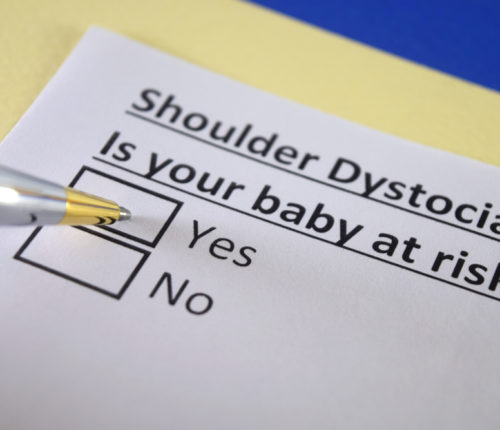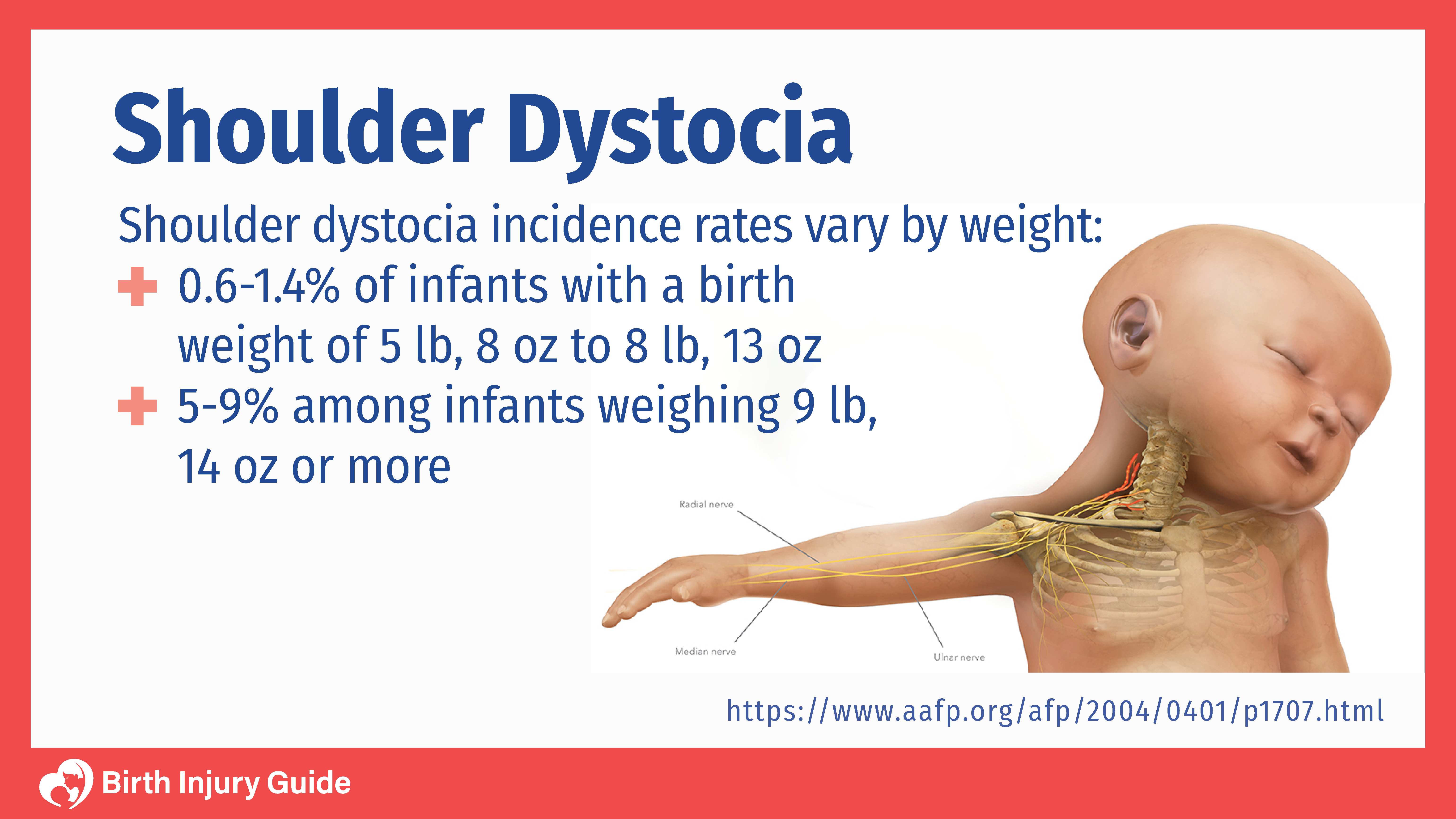
Infant Shoulder Dystocia
Infant shoulder dystocia is a complication that occurs during delivery when an infant’s shoulders become lodged in the mother’s pelvis, often because the baby is proportionately too big for the birth canal (cephalopelvic disproportion, known as CPD).

What is Shoulder Dystocia?
Shoulder dystocia occurs during delivery when one or both of the baby’s shoulders become stuck in the mother’s pelvic area after the head has already been delivered. Shoulder dystocia is considered a medical emergency, and doctors must act quickly to deliver the baby before complications occur.
Generally, infants who have shoulder dystocia are born safely. However, when attempting to pull the infant out the rest of the way, physicians may cause injuries such as a brachial plexus injury, broken bones and facial injuries.
What Causes Shoulder Dystocia?
Shoulder dystocia can happen to any mother during delivery. It is caused by the baby’s shoulders being too wide, or the mother’s pelvic opening being too small. As a result, one or both of the baby’s shoulders may become stuck behind the mother’s pubic bone. This is especially common among women who have very small frames, and therefore, a small pelvis.
There are some other factors that increase the risk of shoulder dystocia, such as:
- Macrosomia: A baby that is large for his or her gestational age. A baby with macrosomia is generally larger than 8lbs 13oz.
- Diabetes: If you have pre-existing diabetes or gestational diabetes, you are at an increased risk for your baby being large, which can cause shoulder dystocia.
- Multiples: If you are pregnant with twins or triplets, you are at risk for shoulder dystocia.
- Obesity: Mothers who are severely overweight are more likely to experience shoulder dystocia.
Is Shoulder Dystocia Preventable?
Shoulder dystocia is, in most instances, a preventable complication during childbirth as physicians who monitor and detect fetal distress can perform an emergency C-section prior to any injuries happening. If the doctor believes the baby will have shoulder dystocia, he or she can schedule a C-section in advance of labor beginning.
In addition, infants with a higher birth weight and are diagnosed with cephalopelvic disorder (CPD) should be candidates for C-section delivery. It’s ultimately up to the physician to make the decision as to whether a C-section will reduce the risks of shoulder dystocia or if the risks of a C-section outweigh the dangers of injuries associated with shoulder dystocia.
Doctors generally attempt medical maneuvers in order to help get the baby out safely and prevent injuries. Typical types of medical maneuvers include internal rotation, the McRoberts maneuver, the Zavanelli maneuver, and suprapubic pressure. If doctors do not use appropriate maneuvers to deliver the baby safely, or delay the delivery process, it could result in preventable injuries to the child, which would be medical negligence.
Start Your FREE Case Review Today
If you or your child is injured as a result of medical negligence, call us to learn more.
Symptoms of Shoulder Dystocia
There are not many symptoms for shoulder dystocia itself. However, depending on if an injury occurs after shoulder dystocia, there may be noticeable symptoms, such as:
- “Turtle sign during labor” (the baby’s head is retracted down into the shoulders and the face is red and puffy)
- Nerve damage and pain in the injured area
- A claw-like hand appearance
- Light paralysis of the affected limb
Mothers are also at risk of medical complications if shoulder dystocia occurs, such as hemorrhaging, uterine rupture and lacerations.
Treatment for Infant Shoulder Dystocia
Treatment for injuries sustained due to shoulder dystocia include supportive care, physical therapy and, in severe cases, surgery. In many cases, the infant is still delivered successfully without harming the brachial plexus nerves or damaging any other part of the body. Therefore, shoulder dystocia treatment will coincide with treatment options for the injuries sustained.
Prognosis for Shoulder Dystocia
Most mothers and babies recover well from shoulder dystocia. That makes the prognosis generally favorable. However, if there are injuries, the prognosis will depend on the severity of those injuries and how well the child responds to treatment. Some baby’s experience fractures, brachial plexus injuries and oxygen deprivation due to shoulder dystocia. These are all potentially serious medical conditions that can affect the child long-term.
It is important to talk to your child’s healthcare team about his or her injuries, treatment options and the prognosis.



